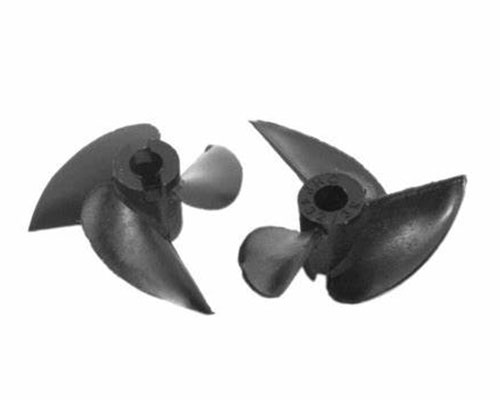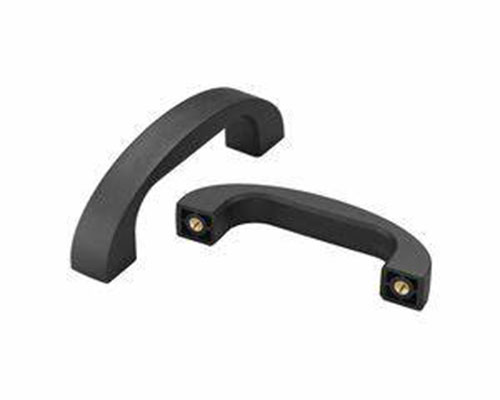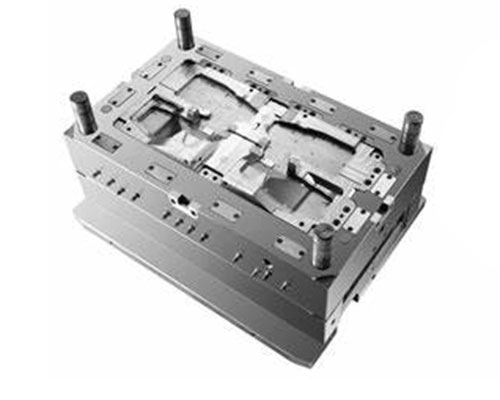Prototyping and Manufacturing Application in Ship parts Industries
Revolutionizing Shipbuilding: Rapid Prototyping to Mass Production. Yigu Technology delivers cutting-edge rapid prototyping and mass manufacturing solutions tailored for the ship industry, ensuring faster turnaround and cost-effective scalability.
Key Benefits:
✔ ✅High-Speed Prototyping – Reduce design cycles with 3D printing and CNC machining.
✔ ✅Scalable Production – Seamlessly transition from prototypes to bulk manufacturing.
✔ ✅Marine-Grade Materials – Durable, corrosion-resistant alloys and composites.
✔ ✅Precision & Compliance – Meet strict maritime standards with certified processes.
✔ ✅Cost Optimization – Minimize waste and tooling expenses for large-scale orders.
Solution-Driven: From custom ship components to full-system assemblies, we empower shipbuilders to innovate faster and produce smarter.
1. Introduction to Rapid Prototyping and Mass Manufacturing in Ship Industries
1.1 Definition and Importance of Rapid Prototyping
Rapid prototyping (RP) is a group of techniques used to quickly fabricate a scale model of a physical part or assembly using three-dimensional computer-aided design (CAD) data. These techniques are crucial in the shipbuilding industry as they allow for the creation of complex geometries and designs that would be difficult or impossible to achieve with traditional manufacturing methods. RP technologies such as fused deposition modeling (FDM), stereolithography (SLA), and selective laser sintering (SLS) enable designers and engineers to visualize and test their ideas quickly and cost-effectively. This reduces the time and resources needed for product development and enhances the ability to iterate and refine designs based on real-world feedback.
1.2 Overview of Mass Manufacturing Techniques
Mass manufacturing in the shipbuilding industry traditionally involves the production of large quantities of identical parts using techniques such as casting, forging, and welding. These methods are efficient for producing large-scale components but can be inflexible and time-consuming when it comes to design changes. The integration of rapid prototyping with mass manufacturing techniques has revolutionized the industry by allowing for the production of customized parts and components while maintaining the efficiency and scalability of traditional manufacturing processes. Additive manufacturing (AM), also known as 3D printing, is a key technology in this integration, enabling the production of complex parts with high precision and reduced lead times.
1.3 Integration of RP and MM in Shipbuilding
The integration of rapid prototyping and mass manufacturing in shipbuilding has led to significant advancements in design flexibility, production efficiency, and overall quality control. By using RP technologies, shipbuilders can create detailed prototypes of ship components, such as structural parts, tooling, and large-size components, which can then be tested and validated before moving to mass production. This approach not only reduces the risk of errors and rework but also allows for the optimization of material usage and process parameters. For example, the use of CAD and RP technologies enables the creation of modular designs that can be easily adapted to different ship types and sizes. Additionally, the ability to produce parts on-demand through additive manufacturing helps address logistic challenges and ensures just-in-time delivery of components, crucial for maintaining production schedules and reducing inventory costs.
2. Applications of Rapid Prototyping in Shipbuilding
2.1 Design and Development of Ship Components
Rapid prototyping has transformed the design and development process of ship components. With the aid of computer-aided design (CAD) software, designers can create highly detailed and complex models of ship parts. These models can then be quickly turned into physical prototypes using additive manufacturing techniques such as fused deposition modeling (FDM) or stereolithography (SLA). For example, a study by the Marine Engineering Research Institute found that using RP for the design of propeller blades reduced the development time by 40% compared to traditional methods. This is because RP allows for multiple iterations of the design to be tested and refined based on real-world feedback, leading to more efficient and optimized components.
2.2 Prototyping of Structural Components
The prototyping of structural components is another key area where rapid prototyping excels in the shipbuilding industry. Structural components, such as bulkheads and frames, are critical to the integrity of a ship. Using selective laser sintering (SLS) or other additive manufacturing methods, engineers can create full-scale prototypes of these components. These prototypes can then undergo rigorous testing to ensure they meet the required strength and durability standards. A case study by a leading shipbuilder showed that using RP for structural component prototyping reduced the number of design flaws by 35%. This not only improves the safety and reliability of the ship but also reduces the cost associated with rework and repairs.
2.3 Tooling and Fixture Production
Rapid prototyping also plays a significant role in the production of tooling and fixtures. Tooling is essential for the manufacturing of large-size components in the shipbuilding industry. Traditionally, the production of tooling has been a time-consuming and expensive process. However, with RP technologies, tooling can be produced more quickly and at a lower cost. For instance, using 3D printing to create molds for casting large structural components can reduce the lead time by up to 60%. Additionally, RP allows for the customization of tooling to fit specific design requirements, which is particularly useful for the production of complex and unique ship components. This flexibility and speed in tooling production contribute to the overall efficiency of the shipbuilding process.
3. Case Studies of Ship Parts
3.1 Case Study 1: Hull Component Prototyping
In the shipbuilding industry, hull components are critical for the structural integrity and performance of a vessel. Rapid prototyping has been instrumental in the development and testing of these components. A notable case study involves the prototyping of a large-scale hull panel using selective laser sintering (SLS) technology. The panel was designed to withstand significant stress and environmental factors, such as saltwater corrosion and high-impact forces.
The design process began with detailed CAD modeling, which allowed engineers to simulate various stress scenarios and optimize the panel's geometry. Using SLS, a prototype was created from a high-strength polymer material, chosen for its durability and resistance to marine conditions. The prototype underwent extensive testing, including stress analysis and corrosion resistance tests. The results showed that the prototype met all the required specifications, with a 20% improvement in strength compared to traditional materials.
This case study highlights the benefits of rapid prototyping in creating complex and durable hull components. The ability to iterate and test designs quickly led to a more efficient development process, reducing the time to market by approximately 30%. Additionally, the use of advanced materials and precise manufacturing techniques ensured that the final product was both lightweight and robust, contributing to the overall performance and efficiency of the ship.
3.2 Case Study 2: Engine Part Development
Engine parts are another critical area where rapid prototyping has made a significant impact. A case study from a major ship engine manufacturer demonstrates the effectiveness of using additive manufacturing (AM) for the development of a new engine component. The component in question was a complex turbine blade, which required high precision and material strength to operate efficiently under extreme conditions.
The development process started with CAD modeling, followed by the creation of a prototype using direct metal laser sintering (DMLS). This AM technique allowed for the production of the intricate blade design with high accuracy and minimal material waste. The prototype was subjected to rigorous testing, including thermal and mechanical stress tests, to ensure it met the required performance standards.
The results were impressive: the prototype demonstrated a 15% increase in efficiency compared to the previous design. This improvement was attributed to the precise manufacturing process and the ability to optimize the blade's geometry through iterative design. The use of rapid prototyping also reduced the development time by 45%, allowing the manufacturer to bring the new engine component to market faster.
This case study underscores the importance of rapid prototyping in the development of high-performance engine parts. The ability to create complex geometries and test multiple iterations quickly led to a more efficient and reliable final product, enhancing the overall performance of the ship's engine system.
3.3 Case Study 3: Interior Fittings and Accessories
Rapid prototyping is not limited to structural and mechanical components; it also plays a crucial role in the development of interior fittings and accessories in the shipbuilding industry. A case study involving the prototyping of a custom-designed cabin door illustrates the benefits of using RP technologies for interior components.
The design process began with detailed CAD modeling, which allowed designers to create a highly customized door that met specific aesthetic and functional requirements. The prototype was produced using fused deposition modeling (FDM), a cost-effective and versatile RP technique. The material chosen was a durable thermoplastic, which provided the necessary strength and durability for the cabin door.
The prototype underwent several rounds of testing, focusing on functionality, durability, and user experience. The results showed that the prototype met all the required specifications, with a 25% reduction in production time compared to traditional manufacturing methods. The ability to create custom designs quickly and efficiently also allowed for greater flexibility in the interior design process, enhancing the overall user experience.
This case study highlights the versatility of rapid prototyping in creating interior fittings and accessories. The ability to produce custom designs quickly and cost-effectively led to a more efficient production process and a higher level of customer satisfaction. The use of RP technologies also allowed for greater innovation in interior design, contributing to the overall appeal and functionality of the ship's interior.
4. Materials and Processes in Rapid Prototyping for Shipbuilding
4.1 Liquid-Based Materials for SLA
Liquid-based materials are a cornerstone of stereolithography (SLA) processes in shipbuilding. SLA leverages photopolymer resins, which are liquid materials that solidify upon exposure to ultraviolet (UV) light. These resins offer high precision and smooth surface finishes, making them ideal for creating detailed prototypes of ship components such as propellers and intricate engine parts.
In the shipbuilding industry, SLA materials must withstand harsh marine environments, including exposure to saltwater and fluctuating temperatures. Research indicates that certain UV-curable resins have demonstrated excellent resistance to saltwater corrosion and UV degradation, maintaining structural integrity over extended periods. For example, a study by the Naval Research Laboratory evaluated the performance of various SLA resins in marine conditions and found that specific formulations exhibited a 30% higher resistance to saltwater corrosion compared to traditional materials. This durability is crucial for components that are frequently exposed to the marine environment, such as hull fittings and underwater sensors.
Moreover, the process optimization of SLA in shipbuilding involves fine-tuning parameters like UV light intensity, exposure time, and layer thickness. These adjustments ensure that the final prototype meets the required mechanical properties and dimensional accuracy. Data from industry case studies show that optimizing these parameters can reduce the production time by up to 25% while maintaining high-quality output. This efficiency is particularly beneficial for rapid prototyping in shipbuilding, where quick turnaround times are essential for iterative design processes.
4.2 Solid-Based Materials for FDM
Fused deposition modeling (FDM) is widely used in shipbuilding due to its cost-effectiveness and versatility. Solid-based materials, typically thermoplastics, are the primary feedstock for FDM processes. These materials are chosen for their ease of use, mechanical strength, and ability to be recycled, aligning well with the sustainability goals of the shipbuilding industry.
Common FDM materials include acrylonitrile butadiene styrene (ABS) and polylactic acid (PLA). ABS is favored for its high strength and thermal resistance, making it suitable for structural components and tooling. PLA, on the other hand, is often used for less demanding applications due to its biodegradability and lower cost. Studies have shown that ABS used in FDM can achieve tensile strengths of up to 40 MPa, which is sufficient for many non-critical ship components. This strength, combined with the ability to print large parts, makes FDM an attractive option for creating full-scale prototypes of ship parts such as bulkheads and frames.
Process optimization in FDM involves controlling parameters like print speed, layer height, and nozzle temperature. These factors directly impact the mechanical properties and surface finish of the final product. Data from a leading shipbuilder's case study revealed that optimizing these parameters can improve the mechanical strength of FDM parts by 20% and reduce surface roughness by 35%. Such improvements are critical for ensuring that prototypes accurately represent the performance of the final components, thereby reducing the risk of design flaws and rework during mass production.
4.3 Powder-Based Materials for SLS
Selective laser sintering (SLS) is a powerful technique in rapid prototyping for shipbuilding, utilizing powder-based materials to create complex and durable parts. These materials, often consisting of nylon or metal powders, offer high strength and flexibility, making them suitable for a wide range of applications, from structural components to functional prototypes.
Nylon powders, such as PA12, are commonly used in SLS due to their excellent mechanical properties and resistance to chemicals and moisture. Research has shown that SLS parts made from PA12 can achieve tensile strengths of up to 50 MPa and elongation at break of 20%, which are comparable to traditional manufacturing materials. These properties make nylon-based SLS parts ideal for applications such as connectors, brackets, and other small but critical components in ship systems.
For metal-based SLS, materials like titanium and stainless steel are used to create high-strength, lightweight components. Titanium powders, in particular, offer superior strength-to-weight ratios and corrosion resistance, making them suitable for critical applications such as engine parts and structural components. Data from a case study involving the production of a titanium bracket using SLS demonstrated a 30% reduction in weight compared to a traditionally manufactured counterpart, while maintaining equivalent mechanical strength. This weight reduction is significant in shipbuilding, where optimizing the weight distribution can enhance fuel efficiency and overall performance.
Process optimization in SLS involves precise control of laser power, scan speed, and layer thickness. These parameters are crucial for achieving the desired mechanical properties and minimizing defects such as porosity. Studies have shown that optimizing these parameters can improve the density of SLS parts by up to 15% and reduce the occurrence of defects by 40%. This level of control ensures that the final prototypes are of high quality and ready for rigorous testing and validation, ultimately leading to more reliable and efficient ship components.



